Common beautiful flowers that begin with the letter L include Lady’s Slipper, Lantana, Larkspur, Lavender, Lily, Lily of the Valley, Linaria, Lisianthus, Lobelia, Lotus, Love in the Mist, and Lunaria.
All of these 16 beautiful flowers that start with “L” have their shapes, sizes, and colors. Colors such as blue, purple, pink, yellow, white, and orange (just to name a few). However, did you know that different pollinators such as butterflies, bees, and hummingbirds are aided by the various colors?
Keep scrolling to learn more about the flowers that start with the letter L.
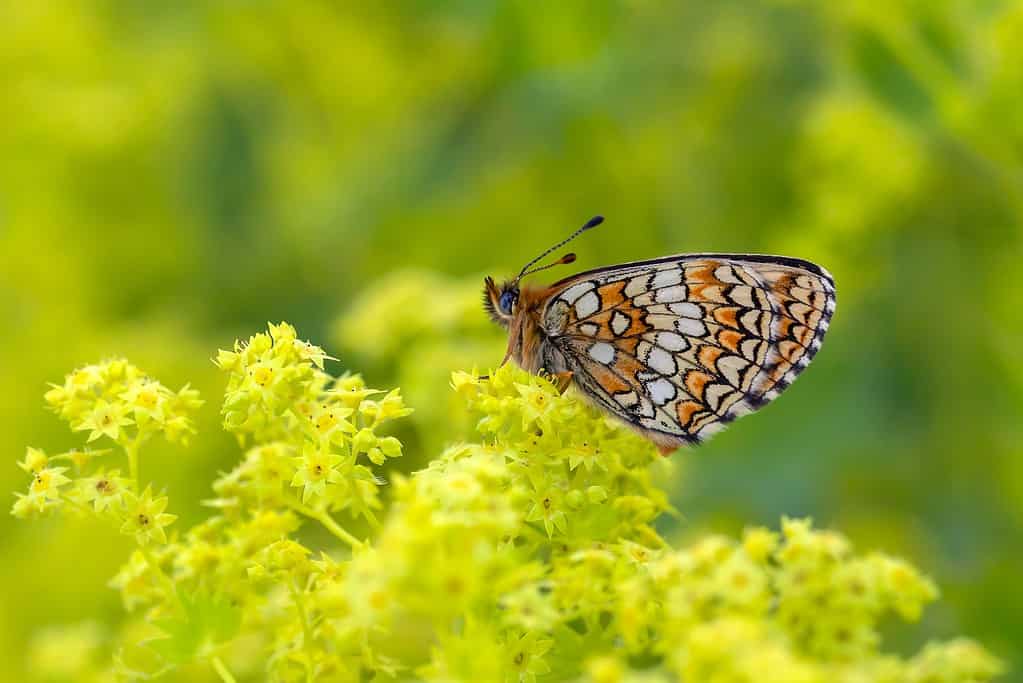
or lady’s mantle with a butterfly perched on top of its yellow flowers.
©Kenan TALAS/Shutterstock.com
These flowers are all beautiful and easy to care for, making them great choices for home gardens. And they come in a variety of colors and sizes so that you can find the perfect ones to add some color and interest to your life. Here are 16 common flowers that start with the letter “L”.
16 Flowers That Start With the Letter “L”
- Lady’s Slipper
- Lantana
- Larkspur
- Lavender
- Lily
- Lily of the Valley
- Linaria
- Lisianthus
- Lobelia
- Lotus
- Love in the Mist
- Lunaria
- Lupin
- Lythrum Salicaria
- Lychnis
- Lysimachia
1. Lady’s Slipper
The majority of the species have both rhizomes and fibrous roots. One notable feature of their flowers is that they have two fertile anthers, which is different from most other orchids that have only one. The slipper-shaped lip of the flower acts as a trap and brings pollinating insects to climb past the reproductive structures. As a result, they deposit or receive pollinia for fertilizing the flower.

Lady’s slippers are vulnerable plants and can only grow in certain climates.
©iStock.com/Chris Babcock
2. Lantana
Lantana is a popular garden flower because of its colorful clusters of tiny flowers. Most varieties are perennial in warm climates and annuals in cold climates. The flowers come in many colors and attract butterflies and hummingbirds. Lantana is drought tolerant, making it a great choice for those looking to create a low-maintenance garden.
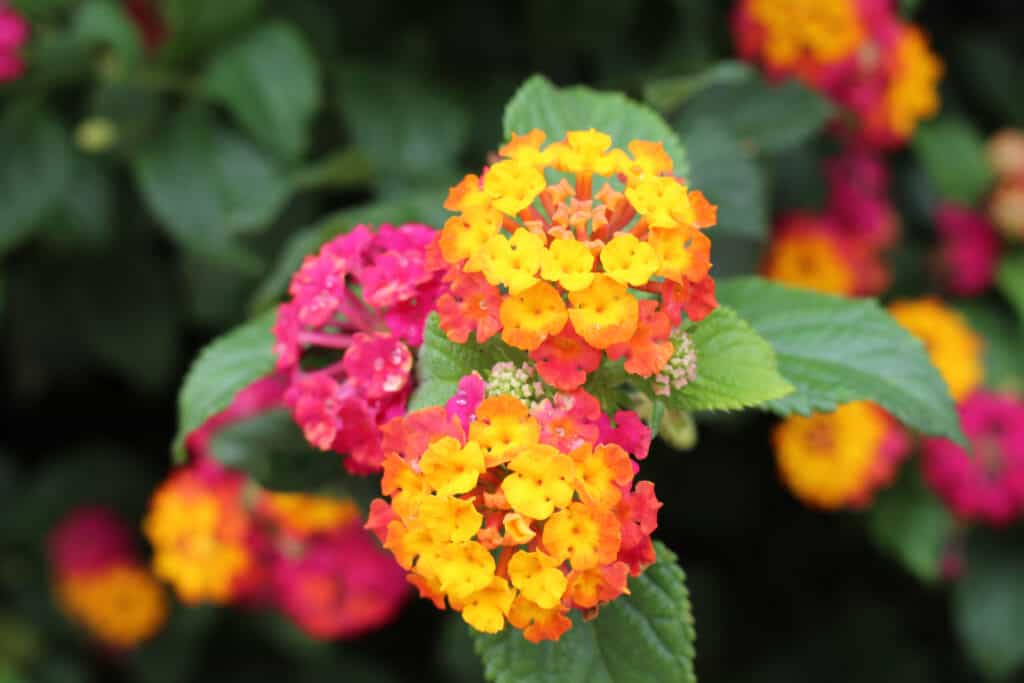
Lantana flowers are native to tropical areas in
Africa
and the Americas.
©Johanna Weber/Shutterstock.com
3. Larkspur
Larkspur is a tall, herbaceous plant with delicate, colorful flowers. The bright blue or purple blooms have a distinctive shape with five spurs. The foliage is lance-shaped in its appearance and ranges in color from pale green to dark green. The plant is native to North America and Europe and requires full sun to partial shade. Larkspur is most commonly planted in flower gardens and can reach up to 3 feet tall.

Larkspur flowers are toxic to humans.
©iStock.com/AndreaAstes
4. Lavender
Lavender is a Mediterranean herb known for its fragrant flowers and essential oils. The small, purple blooms have a sweet aroma that attracts bees and butterflies. Lavender is most commonly used in potpourri, soaps, and perfumes due to its pleasant scent. The leaves can also be used to add flavor to dishes. The plant thrives in well-drained soil and full sun.
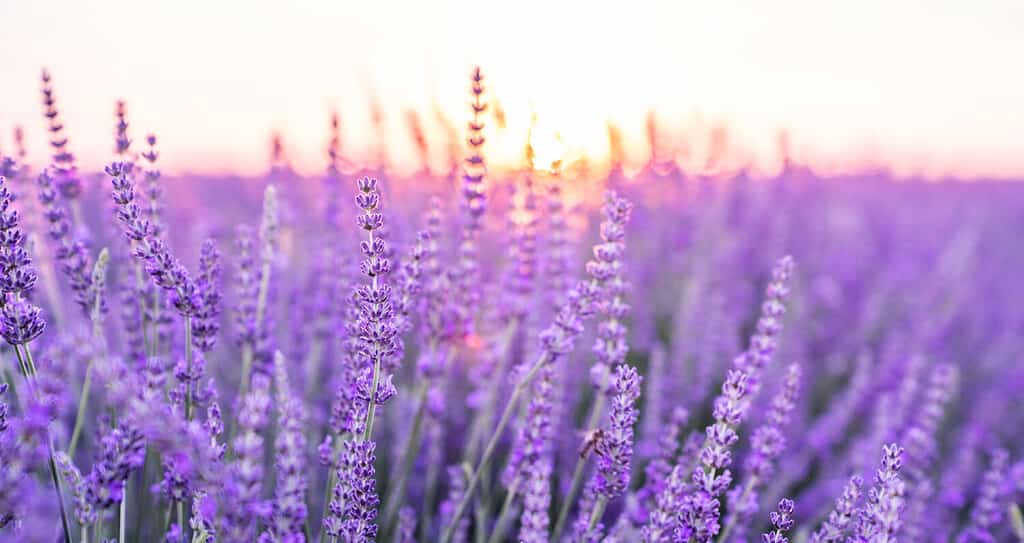
Lavender is a popular flower due to its sweet scent.
©ESstock/Shutterstock.com
4. Lily
Lily is a beautiful flower with trumpet-shaped, white blooms. The flowers have six petals and one central cone of stamens. The blooms are fragrant and have a sweet scent that attracts hummingbirds and other pollinators. The lily can be grown in gardens, containers, or in the ground. It prefers full sun and well-drained soil.

The fleur-de-lis icon in
France
is a stylized design of a lily flower.
©Tasha-photo/Shutterstock.com
5. Lily-of-the-Valley
Lily-of-the-Valley is a beautiful and highly fragrant flower. The blooms are white or pink and have two long, curved petals. The foliage is green and the plant grows in clusters of bell-shaped flowers. Lily-of-the-Valley is most commonly found in the shady, moist areas of its habitat. It prefers partial shade and moist, acidic soil.
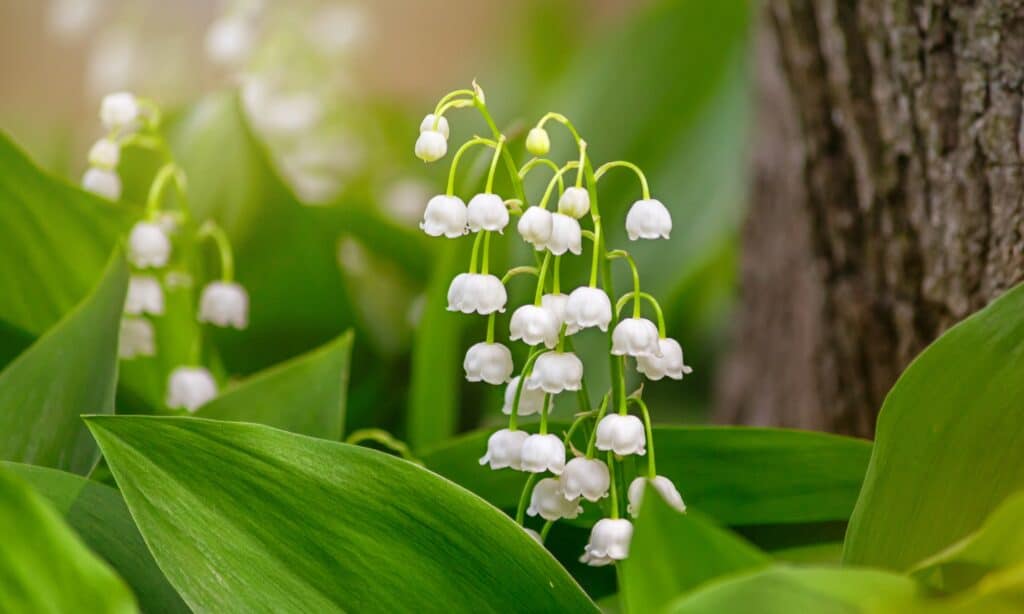
Lily-of-the-Valley is
Finland’s
national flower.
©iStock.com/rustamank
6. Linaria
Linaria is a member of the Snapdragon family and has small, colorful blooms. The flowers are usually pink, purple, or white and have a tubular shape. Linaria is drought-tolerant and grows in full sun (or partial shade.) It prefers well-drained soil and is a great choice for rock gardens, borders, or containers.
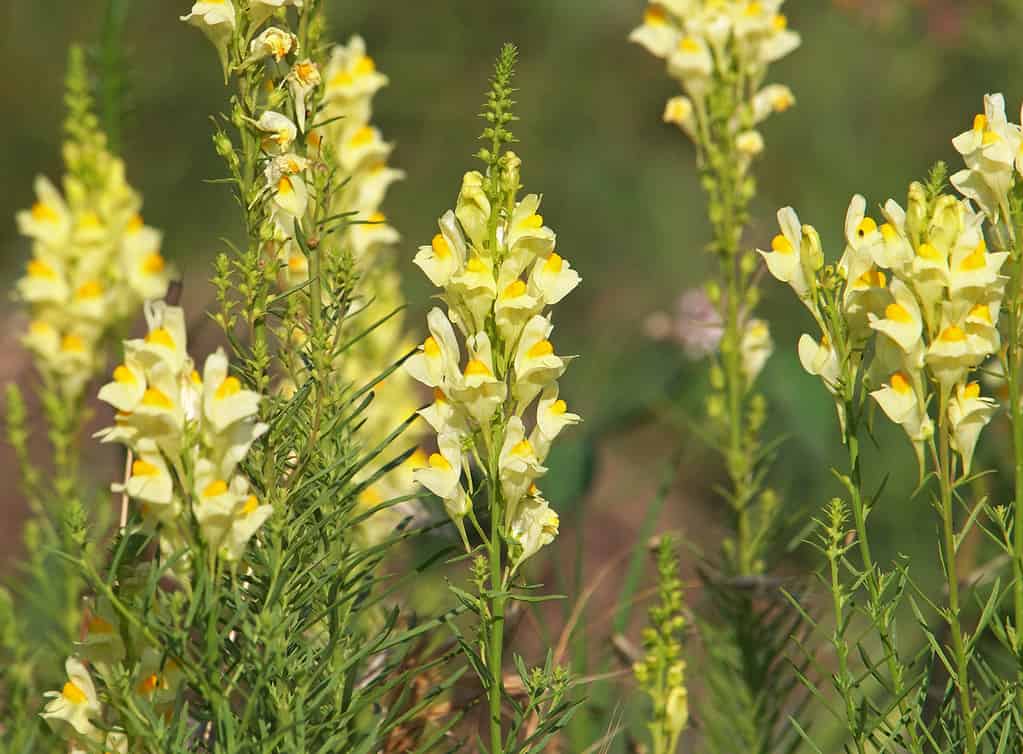
is often called wild snapdragon, or butter and eggs.
©iStock.com/emilio100
7. Lisianthus
Lisianthus is an annual flower that has large, ruffled blooms with delicate petals. The flowers come in shades of pink, white, purple, and blue and have a velvety texture. Lisianthus grows best in sunny locations with moist soil. It can reach up to 2 feet tall and makes a great addition to floral arrangements or cutting gardens.
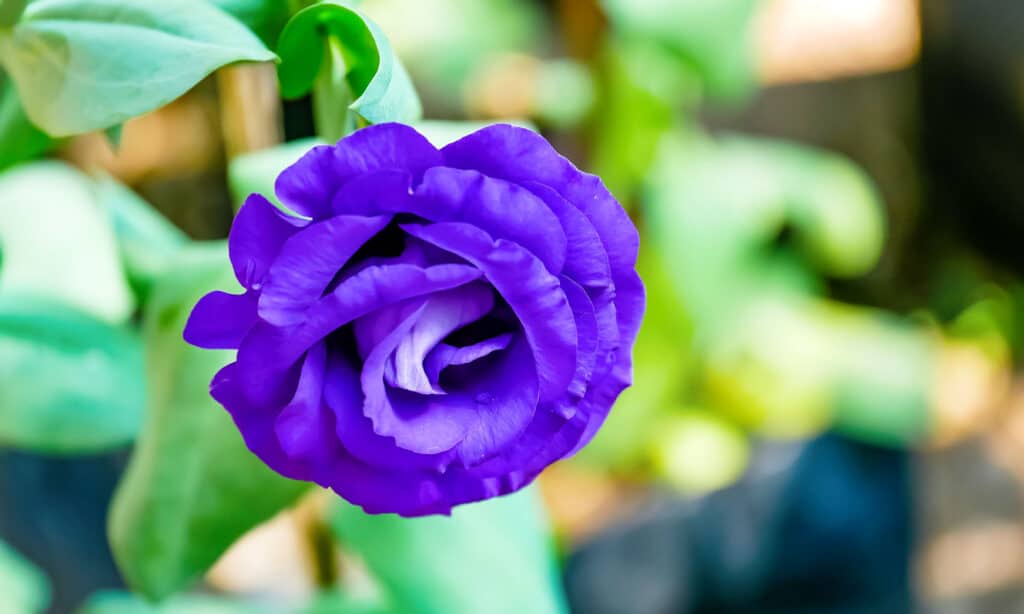
Lisianthus flowers come in many different colors and thrive in warmer areas.
©Sorawit8888/Shutterstock.com
8. Lobelia
Lobelia is an easy-to-grow flower that comes in many colors including white, pink, blue, and purple. The blooms have five petals and a small center of yellow stamens. Lobelia prefers full sun to partial shade and moist soil. It is most commonly used in hanging baskets (or containers) as it has long stems that can drape gracefully over the edge.
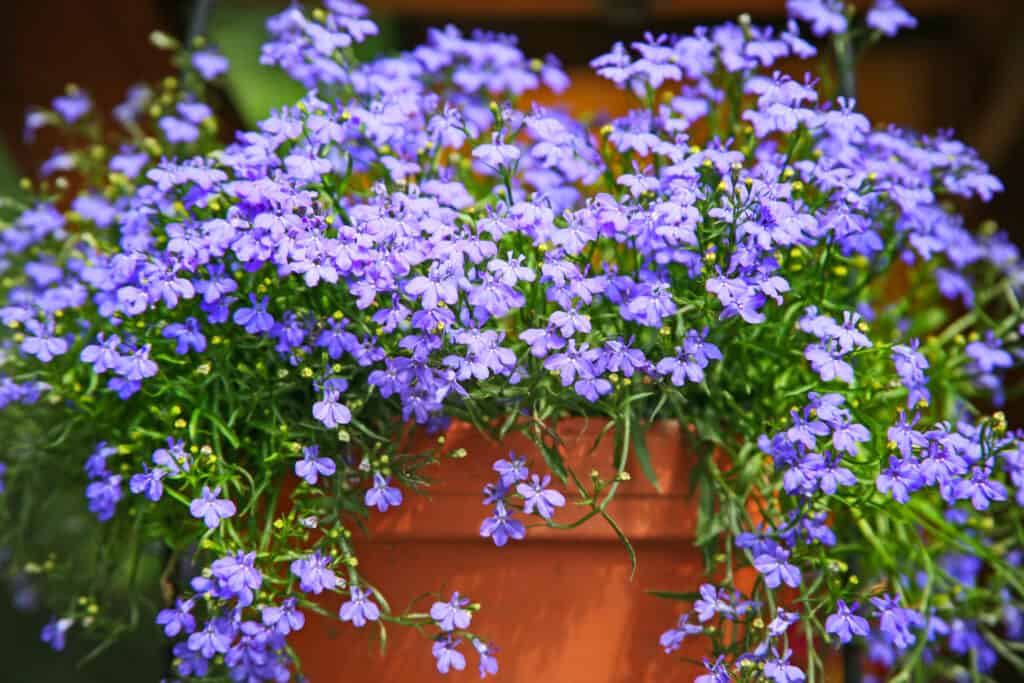
Most types of lobelia flowers prefer warm regions, but there are a few that live in cooler areas as well.
©iStock.com/LailaRberg
9. Lotus
The Lotus flower is an ancient symbol of beauty, purity, and enlightenment. The flowers are large and range in color from white to pink or red. They have up to thirty petals that form an intricately patterned cup with a golden center of many stamens. Lotus flowers grow best in still water such as ponds or slow-moving streams where they can reach depths of up to 6 feet.
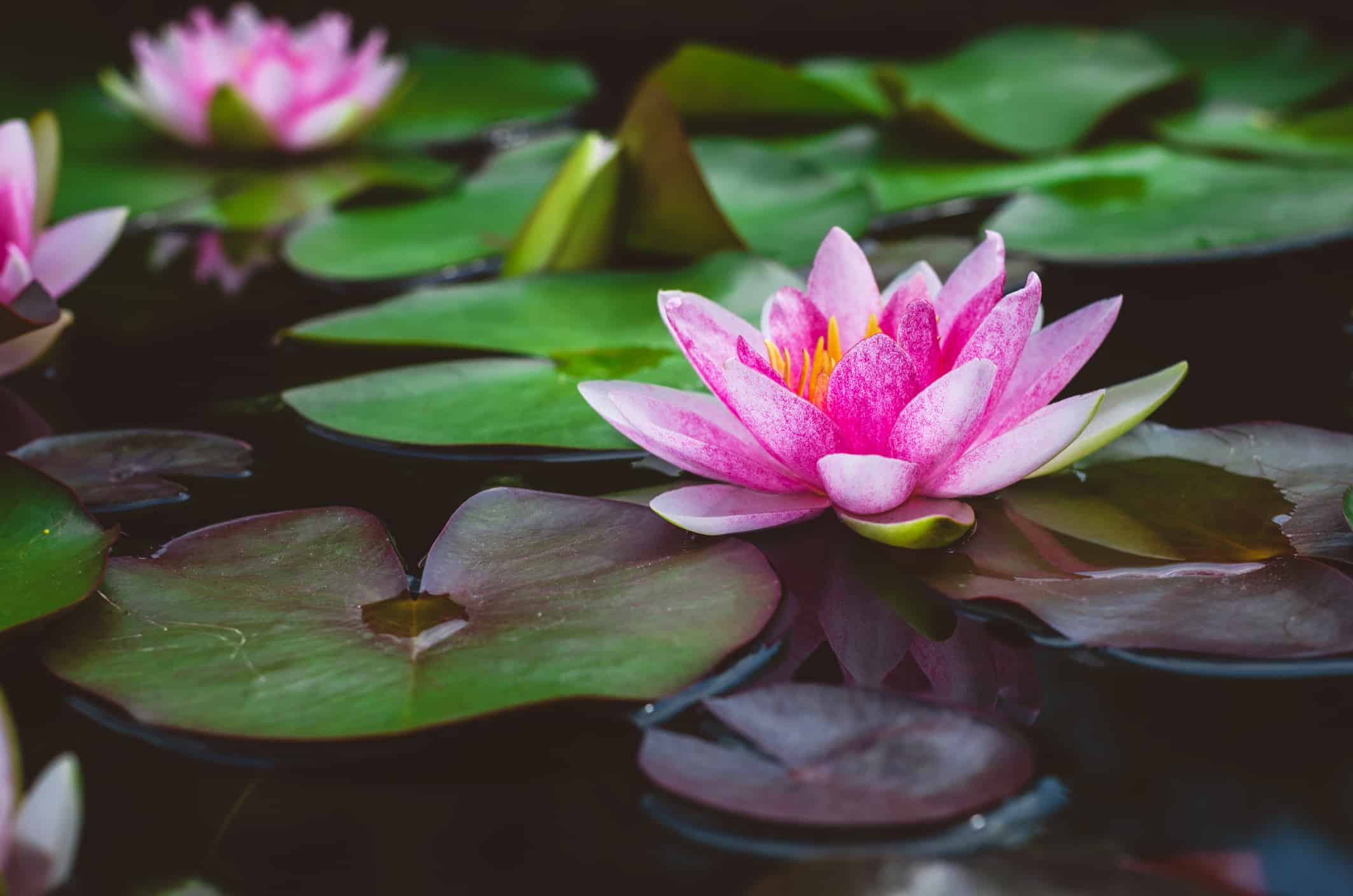
Sometimes you might hear a lotus flower referred to as a water lily.
©iStock.com/Thithawat_s
10. Love-in-the-Mist
Love-in-the-Mist is a popular garden flower that has lovely delicate blooms. The flowers come in shades of pink, purple, blue, and white and have an intricate structure with five petals. Love-in-the-Mist grows best in full sun and moist soil. It can reach up to 3 feet tall and makes a great addition to cutting gardens or wildflower meadows.
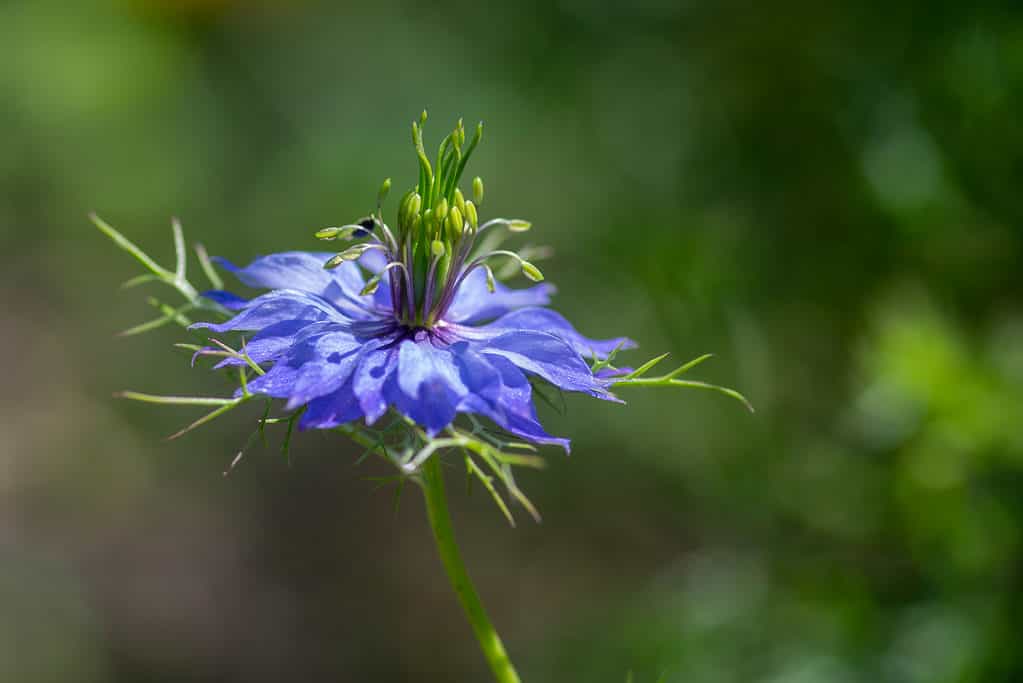
The Love-in-a-Mist flower is native to southwest Asia, north
Africa
, and southern Europe.
©Iva Vagnerova/Shutterstock.com
12. Lunaria
Lunaria is an old-fashioned flower that produces silvery pods that resemble coins. The flowers are small, purple, and bell-shaped with four petals arranged around a yellow center of stamens. Lunaria prefers full sun to partial shade and moist soil. It is a great choice for wildflower meadows or cottage gardens.

The name Lunaria comes from Latin and means “moon-like”.
©iStock.com/Artur Bogacki
13. Lupin
Lupin is a tall, showy flower that comes in shades of pink, purple, yellow, and white. The blooms have five petals arranged around a center of many stamens. Lupin prefers cool climates with well-drained soil and full sun to partial shade. It can reach up to 4 feet tall and makes a great addition to cutting gardens or borders.
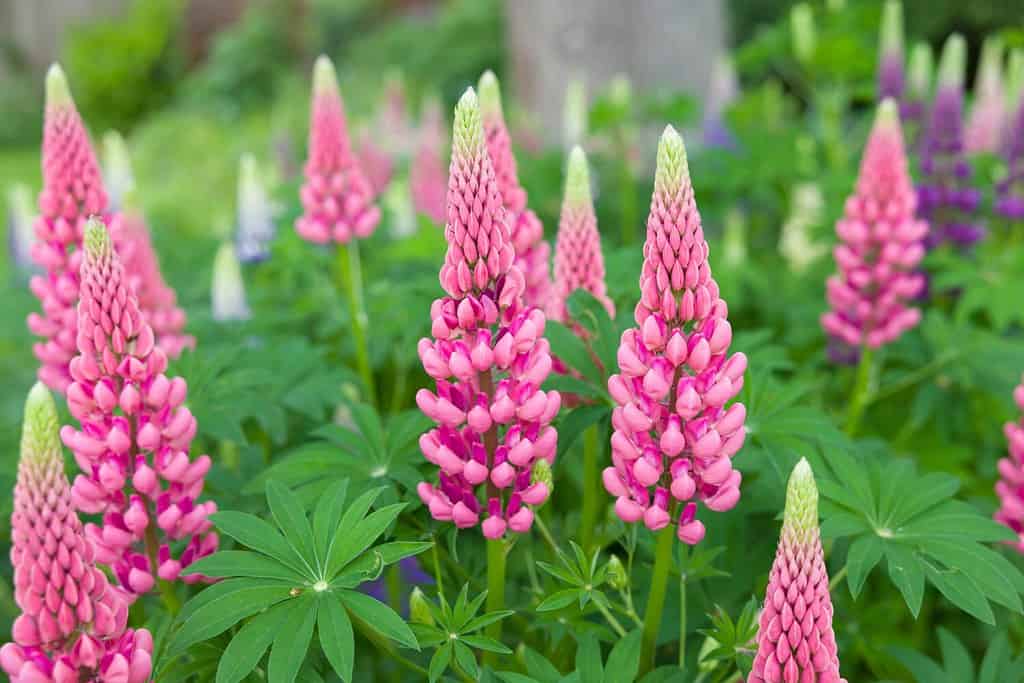
There are over 200 different species of lupin flowers.
©Paul Maguire/Shutterstock.com
14. Lythrum
Lythrum is an easy-to-grow perennial with vibrant purple flowers that attract pollinators such as bees and butterflies. The blooms have six petals arranged around a central cone of stamens. Lythrum prefers full sun and moist, well-drained soil. It can reach up to 4 feet tall and makes a great addition to wetlands or marsh gardens.
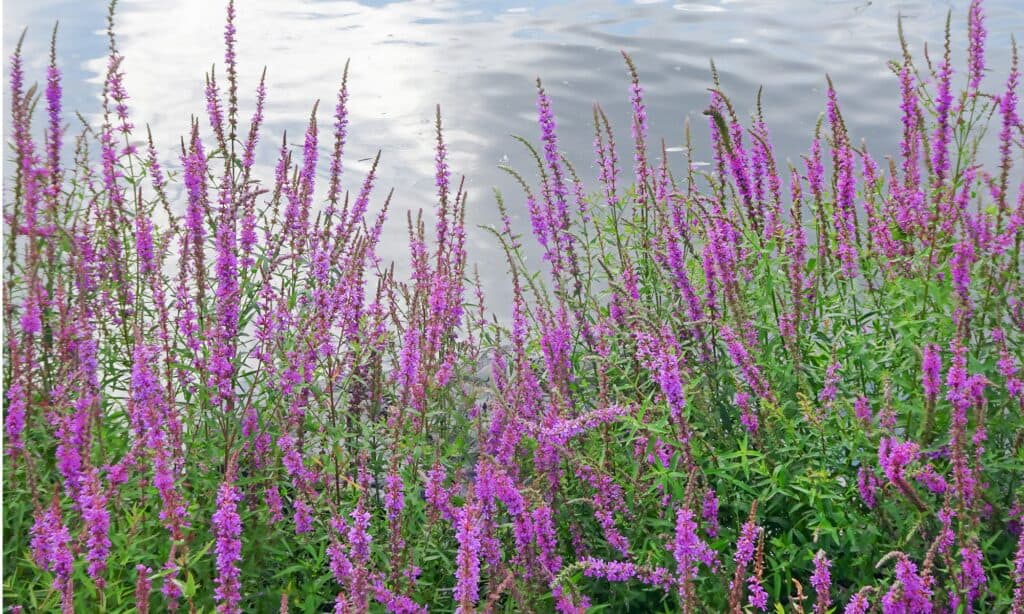
Lythrum can grow in drier areas but usually live in marshy and boggy regions.
©iStock.com/Natalia Kazarina
15. Lychnis
Lychnis is an easy-to-grow flower with beautiful, delicate blooms. The flowers come in shades of pink, purple, red, and white and have five petals arranged around a central cone of stamens. Lychnis prefers full sun to partial shade and moist soil. It can reach up to 2 feet tall and makes a great addition to cutting gardens or wildflower meadows.

Lychnis flowers go by many names, including
rose campion
, bloody William, mullein-pink, and dusty miller.
©iStock.com/Nahhan
16. Lysimachia
Lysimachia is a low-growing, evergreen herb that produces small yellow flowers. The blooms have five petals and a central cone of stamens. Lysimachia prefers full sun to partial shade and moist soil. It can reach up to 1 foot tall and makes a great addition to rock gardens or borders.
These flowers are also great additions to gardens, as they can provide a wide range of colors and textures depending on the type of flower. Many of them are well-suited for specific types of gardens. Gardens such as wildflower gardens, cutting gardens, rock gardens, water gardens, shade gardens, cottage gardens, vegetable gardens, and more.
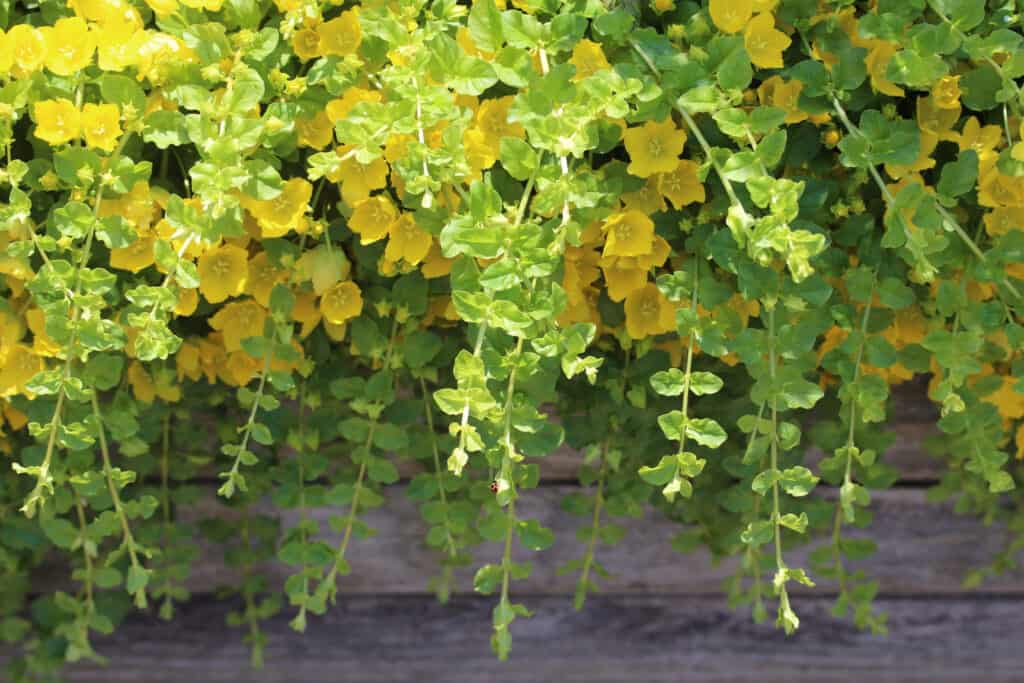
©iStock.com/AKIsPalette
All in all, these flowers are beautiful and easy to care for, making them great choices for home gardens. No matter what type of garden you have or the color palette you’re looking for, there is sure to be an “L” flower that will fit in perfectly!
The photo featured at the top of this post is © itasun/Shutterstock.com
Thank you for reading! Have some feedback for us? Contact the AZ Animals editorial team.







